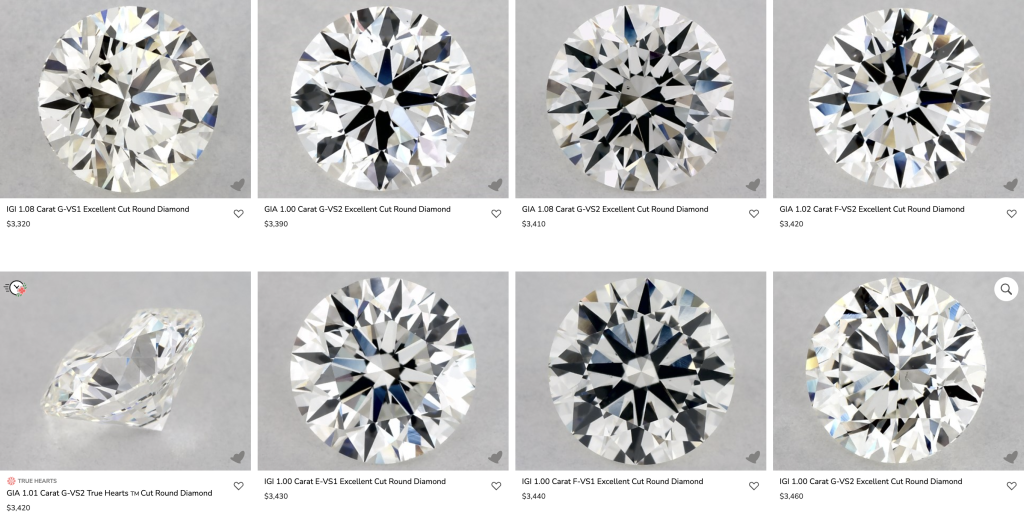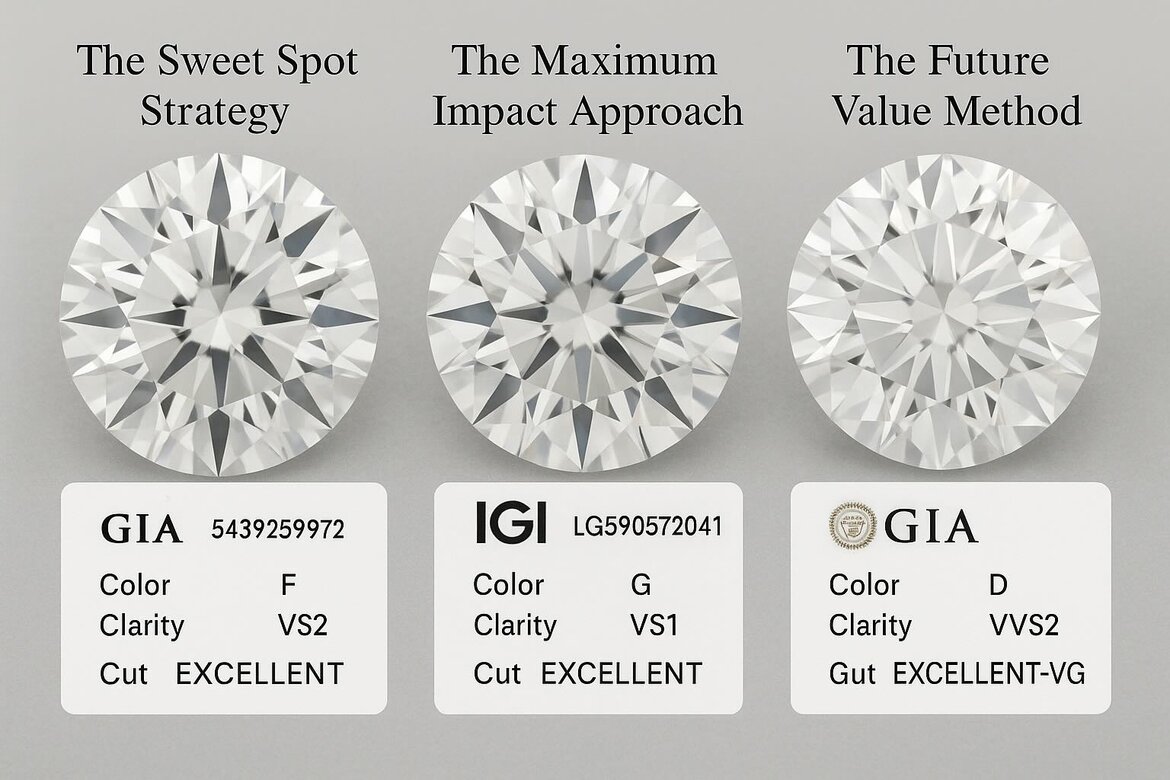Diamonds, treasured for their brilliance and beauty, are often thought of as flawless creations. However, most diamonds contain natural features called inclusions—internal characteristics that reflect their formation journey. One of the most intriguing of these is the “needle inclusion.”
This comprehensive guide explains everything you need to know about needle inclusions in diamonds. From their formation and visibility to how they influence value and buying decisions, this article offers a clear path to diamond literacy for collectors, jewelers, and consumers in 2025.
What Is a Needle Inclusion in a Diamond?
A needle inclusion is a long, slender crystal or internal feature resembling a needle, which forms inside a diamond during its natural growth. These inclusions can vary in length, density, and color—from transparent to white or black. Typically invisible to the naked eye, they become visible under 10x magnification, which is the industry standard for clarity grading.
Though thin, a needle can stretch across a diamond’s interior and appear as a single straight line or as part of a group of inclusions.
How Do Needle Inclusions Form in Diamonds?
Diamonds form deep within the Earth under extreme heat and pressure. As they crystallize, various minerals or crystal strains can get trapped inside. When these inclusions grow in a long, linear form, they appear as needle inclusions.
Common types of minerals that can cause needle inclusions:
- Rutile
- Graphite
- Garnet
- Olivine
Sometimes, these inclusions form along crystal grain lines or planes of weakness, creating the needle-like appearance. They’re a part of the diamond’s geological fingerprint.
Are Needle Inclusions Considered Flaws?
While needle inclusions are classified as internal characteristics, they are not necessarily considered flaws that devalue a diamond dramatically. Their impact depends on:
- Position: Needles in the center (table) are more visible than those near the edge (girdle).
- Length and number: A single short needle may be insignificant, but a cluster can reduce clarity.
- Color: Transparent needles are harder to detect than dark ones.
- Visibility: If not visible to the naked eye, the inclusion may have minimal impact.
Many diamonds with needle inclusions fall into high clarity grades like VS or VVS.
How Are Needle Inclusions Classified in Clarity Grading?
The Gemological Institute of America (GIA) and other grading bodies assess inclusions based on:
- Number
- Size
- Nature (type of inclusion)
- Position (location within the diamond)
- Relief (visibility)
In clarity grading:
- FL/IF (Flawless/Internally Flawless): No visible inclusions under 10x magnification
- VVS1–VVS2: Needle inclusions may be present but are very difficult to detect
- VS1–VS2: Slightly more noticeable needle inclusions, usually not visible to the naked eye
- SI1–SI2: Needles may be seen without magnification under close inspection
- I1–I3: Visible inclusions, potentially affecting durability and brilliance
Can Needle Inclusions Impact the Diamond’s Durability?
Typically, a single needle inclusion does not compromise a diamond’s durability due to the stone’s inherent hardness. However, if a needle is:
- Long and reaches the surface
- Located in structurally vulnerable areas (e.g., girdle, points of pear/marquise cuts)
- Associated with other inclusions such as feathers or clouds
Then it could potentially create weak zones in the stone. A professional inspection is advised before purchasing diamonds with large or surface-reaching needle inclusions.
Identifying Needle Inclusions: Tools and Techniques
Needle inclusions are often invisible to the naked eye and require magnification tools such as:
- 10x Loupe: Basic jeweler’s tool for spotting inclusions
- Gemological Microscope: Provides enhanced detail
- Darkfield Lighting: Enhances contrast and reveals translucent needles
- Grading Reports: Clarity plots will typically mark needle inclusions as thin lines
Ask to review a diamond’s GIA, AGS, or IGI report for confirmation of needle inclusions and their location.
Are Needle Inclusions Always a Dealbreaker?
Absolutely not. Needle inclusions are common and often have minimal impact on beauty or performance. Smart diamond shoppers can find excellent value in diamonds with inconspicuous needle inclusions.
Needle inclusions become a concern only when:
- They are large and dark
- They cluster together to form clouds
- They reduce light performance
Otherwise, they provide an opportunity to secure a lower-priced diamond that looks identical to a higher-clarity one to the unaided eye.
Should You Buy a Diamond with a Needle Inclusion?
Yes—if it meets these conditions:
- The needle is not visible to the naked eye
- It is not located directly under the table (center of the diamond)
- The diamond has good brilliance and fire
- The clarity grade is supported by a reputable lab report
- You trust the jeweler or have reviewed the diamond in person or via high-resolution imagery
Needle inclusions are often less noticeable than other types and may be the best choice for balancing price and appearance.
What’s the Difference Between Needle Inclusions and Other Inclusions?
Here’s how needle inclusions compare to others:
| Inclusion Type | Appearance | Risk to Durability | Impact on Value |
|---|---|---|---|
| Needle | Thin, linear | Low | Low to moderate |
| Feather | Wispy crack | Medium to high | Moderate to high |
| Crystal | Rounded shape | Low to medium | Depends on size/color |
| Pinpoint | Tiny dots | Low | Low unless clustered |
| Cloud | Group of pinpoints | Medium | Moderate if dense |
Understanding the differences helps buyers assess which inclusions are tolerable and which to avoid.
Needle Inclusions in Lab-Grown Diamonds
Lab-grown diamonds also feature inclusions, including needle-like formations. These may differ slightly:
- HPHT diamonds may contain metallic or needle-like flux inclusions
- CVD diamonds can have striations or elongated growth lines
Grading standards remain the same. Reputable labs report all inclusions found under 10x magnification, whether the diamond is natural or lab-grown.
Do Needle Inclusions Affect Light Performance?
Only in extreme cases. A single, fine needle inclusion generally does not obstruct light performance. However:
- A cluster of needles may scatter light
- Dark needles may appear as a visual obstruction under certain lighting
Always view the diamond under different lighting conditions and inspect its sparkle, fire, and brilliance.
Insurance and Appraisal for Diamonds with Needle Inclusions
A diamond with needle inclusions should be insured and appraised just like any other diamond. When getting an appraisal:
- Provide the grading report
- Include clear photographs
- Ensure the appraiser notes the inclusion type
Inclusions do not disqualify a diamond from insurance, but they help uniquely identify the stone in case of loss or theft.

